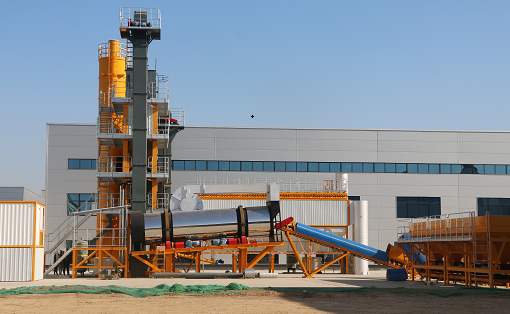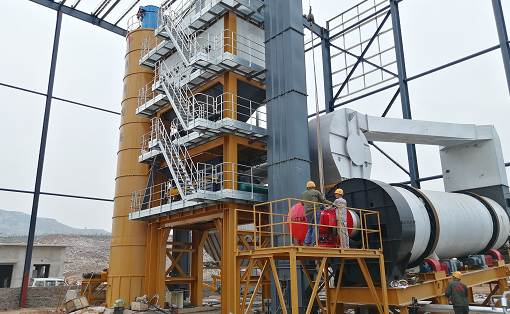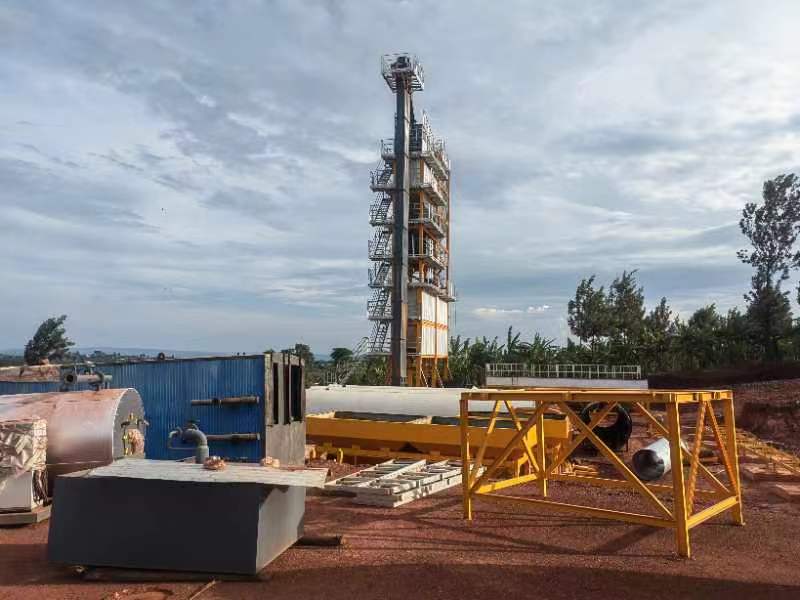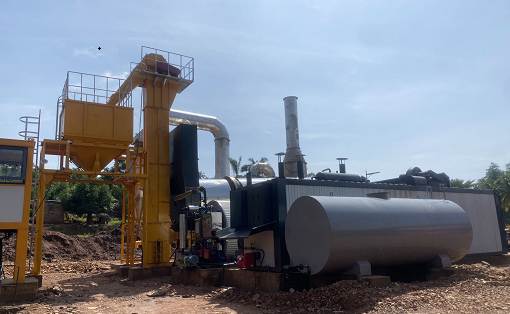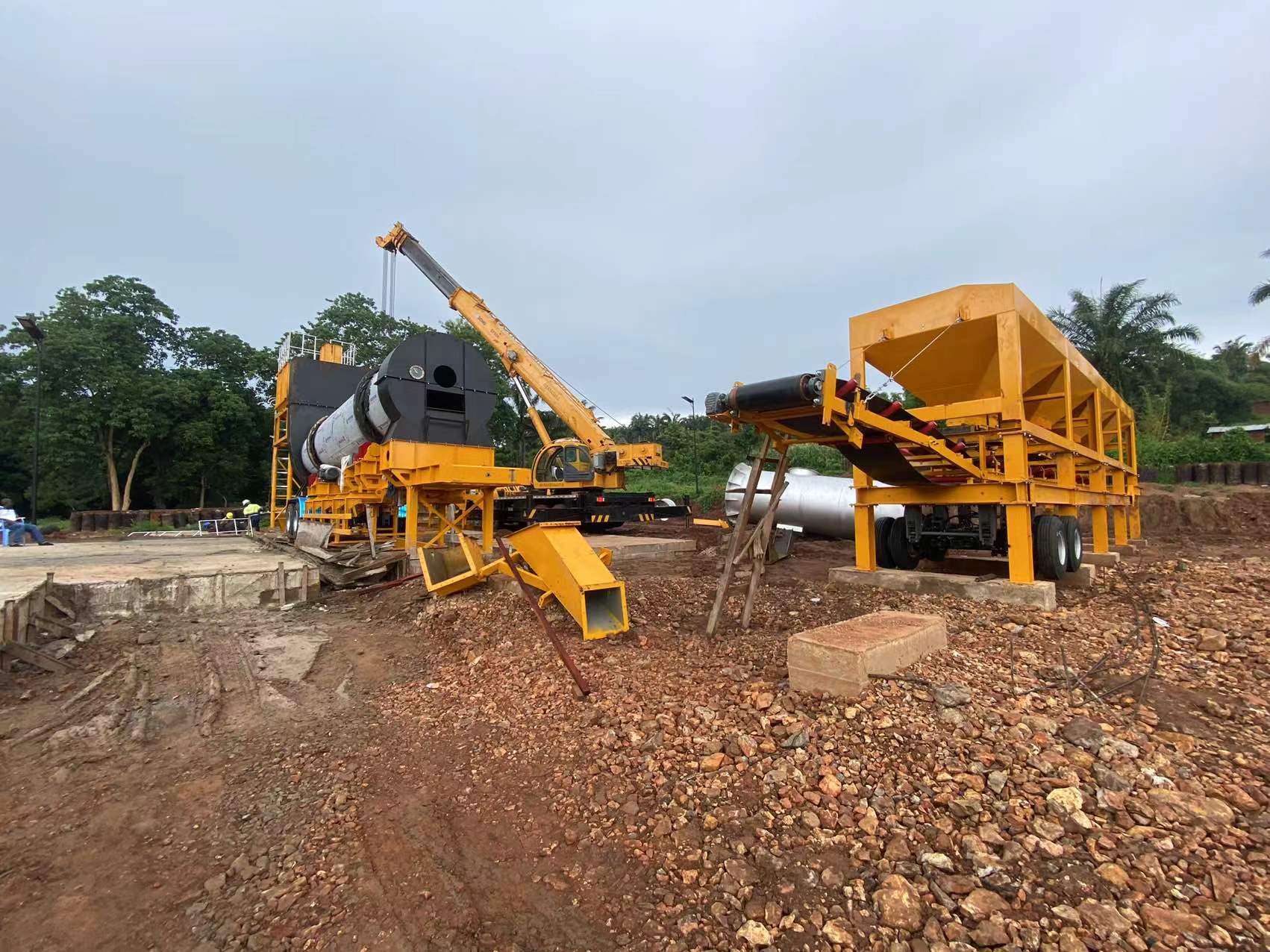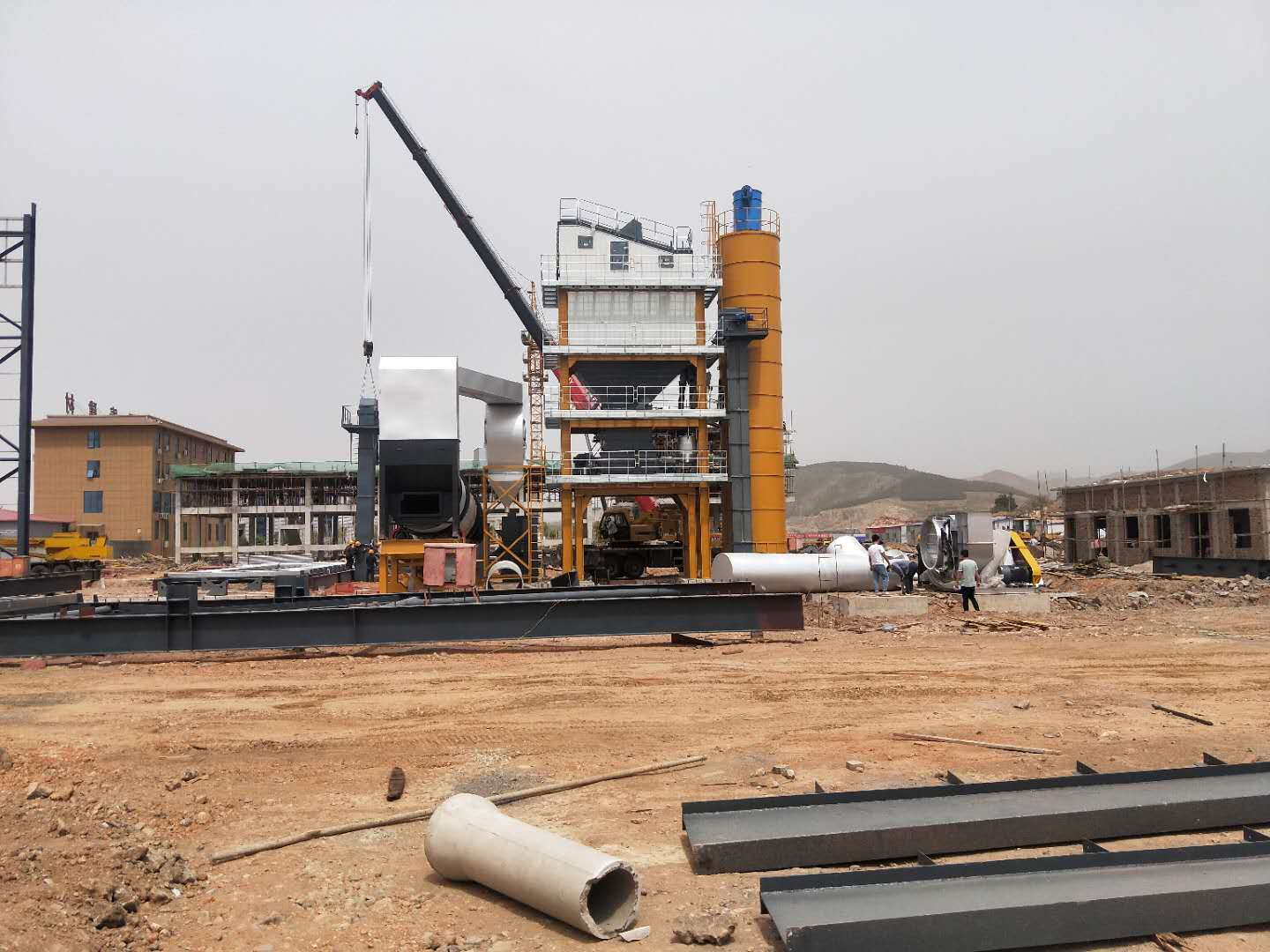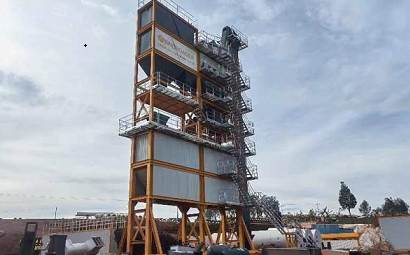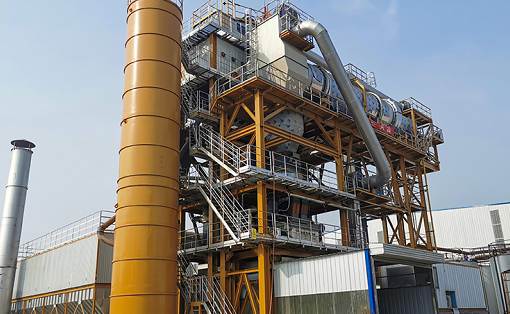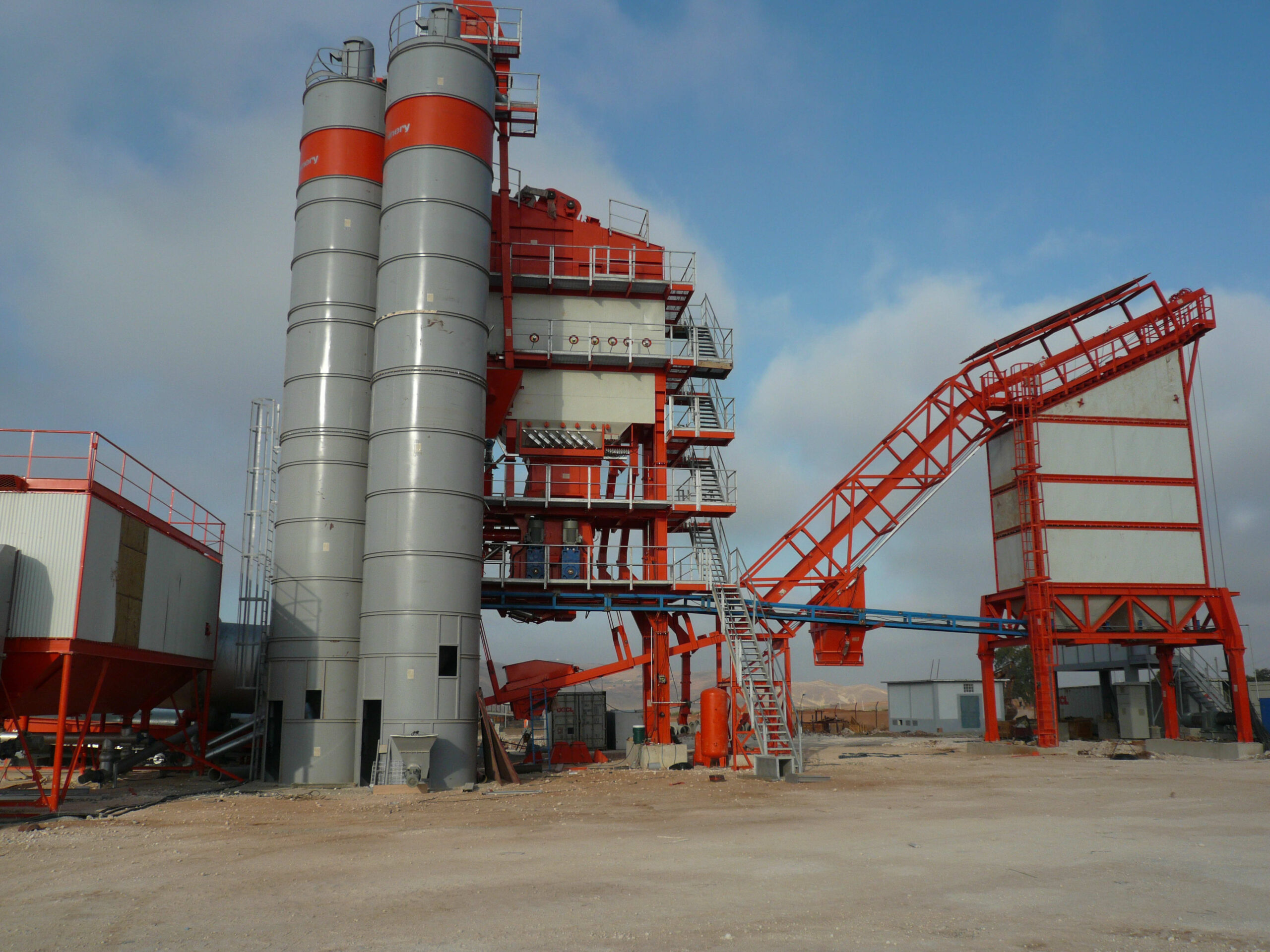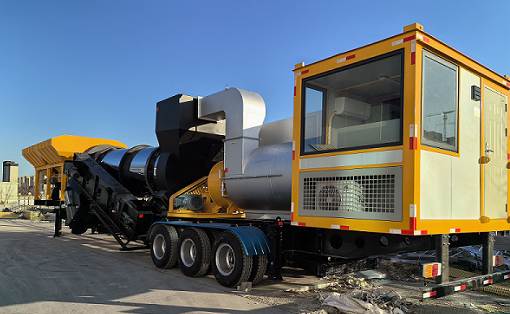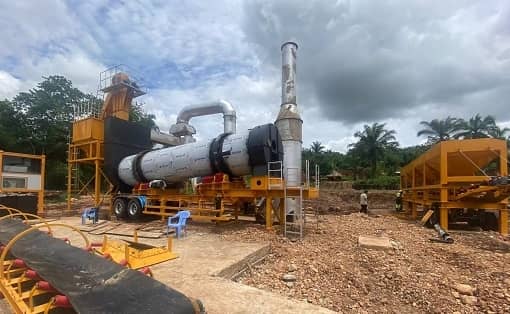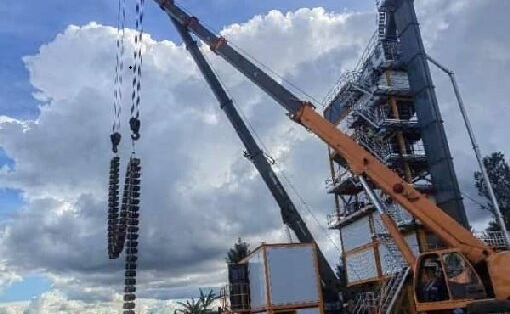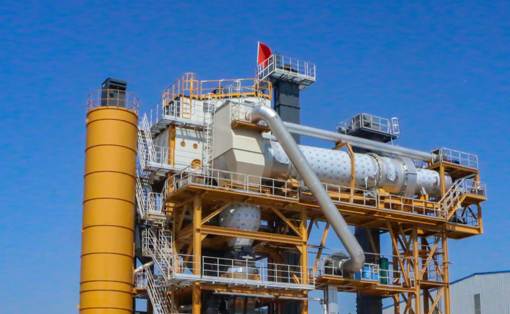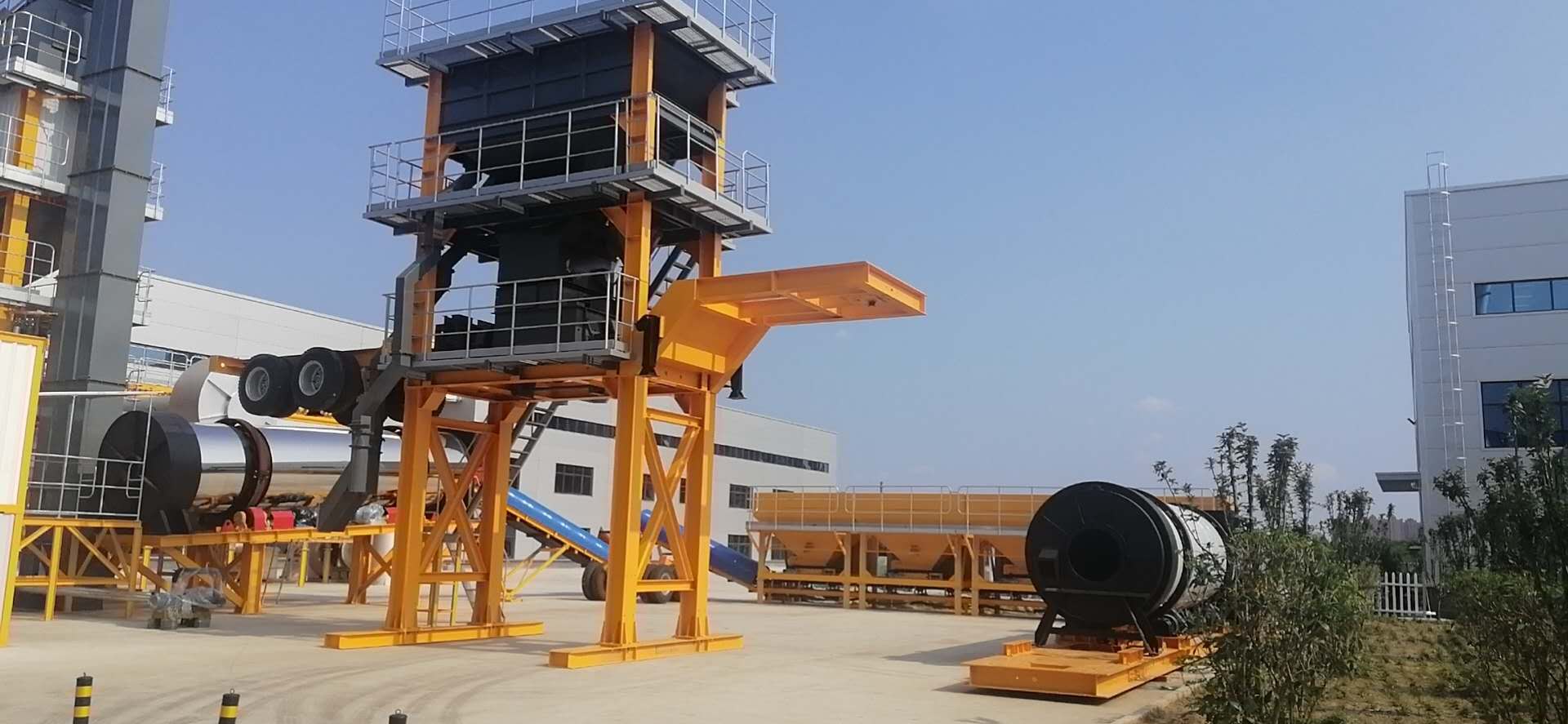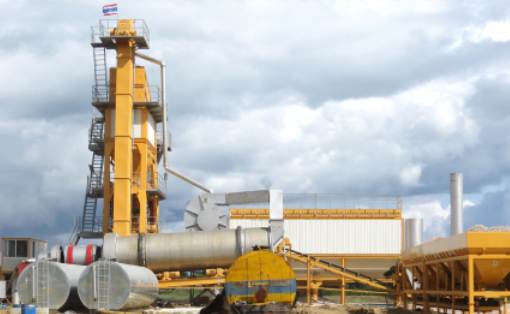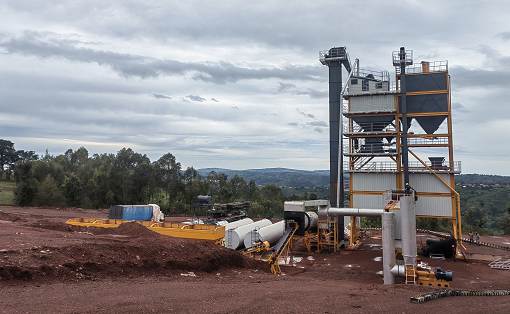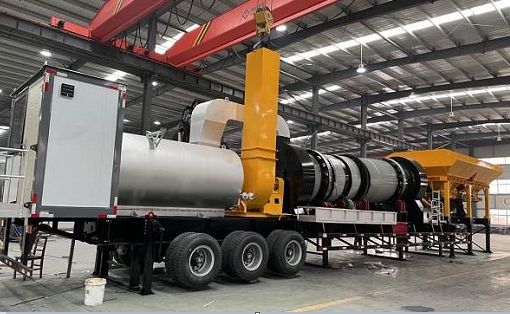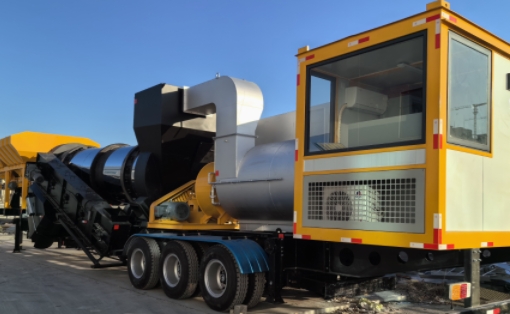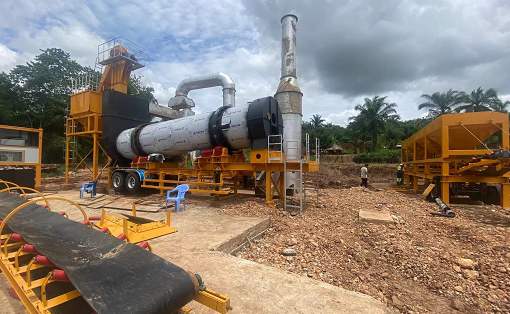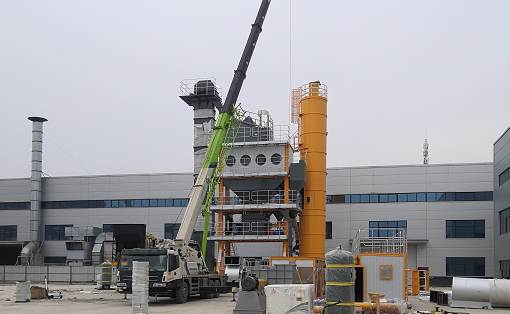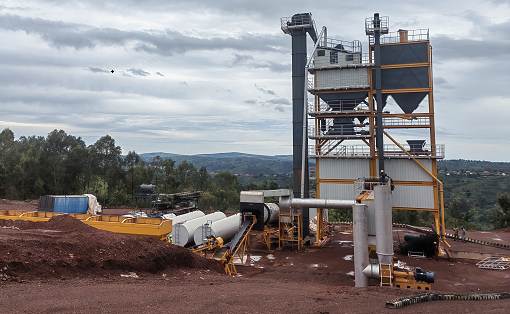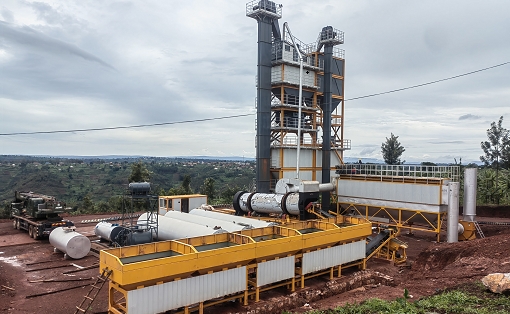Asphalt flue gas treatment plan for asphalt mixing plants
Asphalt flue gas treatment methods, their principles and characteristics, and an asphalt flue gas environmental protection treatment plan based on the actual asphalt flue gas problems faced by the unit.
1. Basic situation
My unit’s mixing plant is equipped with a 4000-type asphalt mixing plant. During daily production of the asphalt mixing plant, a large amount of asphalt smoke will be emitted from the mixing pot discharge port. This smoke not only has an unpleasant smell, but also contains A large number of compounds that are harmful to the human body, such as benzopyrene, benzanthracene, carbazole and other polycyclic aromatic hydrocarbons, mostly have carcinogenic risks. Smoke overflow will cause pollution to the surrounding atmospheric environment and affect the personal health of workers. Although the overflow port of the mixing station is equipped with a dust retaining wall, the fine dust is seriously raised, and the cold material belt conveyor is dusty. In order to protect the environment, reduce pollution, and reduce cost investment, based on full research and absorption of technology in the same industry, and combined with the actual situation of asphalt mixing, we are planning to install asphalt mixing bag dust collectors to the flue at the discharge port of the mixing pot to control asphalt fumes. Gas is processed. The dust removal efficiency of the bag dust collector can reach 97%~99%, and the dust-containing gas can be purified to a level of 50mg/Nm3.
Asphalt flue gas treatment methods, their principles and characteristics, and an asphalt flue gas environmental protection treatment plan based on the actual asphalt flue gas problems faced by the unit.
1. Basic situation
My unit’s mixing plant is equipped with a 4000-type asphalt mixing plant. During daily production of the asphalt mixing plant, a large amount of asphalt smoke will be emitted from the mixing pot discharge port. This smoke not only has an unpleasant smell, but also contains A large number of compounds that are harmful to the human body, such as benzopyrene, benzanthracene, carbazole and other polycyclic aromatic hydrocarbons, mostly have carcinogenic risks. Smoke overflow will cause pollution to the surrounding atmospheric environment and affect the personal health of workers. Although the overflow port of the mixing station is equipped with a dust retaining wall, the fine dust is seriously raised, and the cold material belt conveyor is dusty. In order to protect the environment, reduce pollution, and reduce cost investment, based on full research and absorption of technology in the same industry, and combined with the actual situation of asphalt mixing, we are planning to install asphalt mixing bag dust collectors to the flue at the discharge port of the mixing pot to control asphalt fumes. Gas is processed. The dust removal efficiency of the bag dust collector can reach 97%~99%, and the dust-containing gas can be purified to a level of 50mg/Nm3.
2. Purification plan
The main component of asphalt flue gas is tar fine mist particles with a particle size of 0.1-1.0 μm. The main task of asphalt flue gas treatment is to treat these tar fine mist particles so that they are not discharged into the air and reduce as much as possible the effect on the environment. In addition, we also investigated the treatment of asphalt flue gas, mainly using the induced air dust removal method and the exhaust gas photooxygen catalytic activated carbon adsorption method.
The methods to control asphalt flue gas are as follows:
1. Induced air dust removal method:
A flue is installed at the mixing pot discharge port and the stone overflow port. The asphalt fumes generated during production and the dust generated during discharging are directly extracted with an induced draft fan, and filtered through bag dust removal to achieve pure emissions. (The dust raised by the cold material belt conveyor can be treated by a single machine for dust removal)
2. UV photooxygen catalysis and activated carbon exhaust gas treatment equipment
It is a special treatment and purification equipment for removing organic waste gas and malodorous gas. It uses high-energy ultraviolet beam irradiation to decompose organic (malodorous) waste gas, such as ammonia, trimethylamine, hydrogen sulfide, methyl mercaptan, carbon disulfide, styrene, benzene, and other VOCs. The molecular chain structure of organic-like odor gases causes them to degrade and transform into low-molecular compounds, such as CO2, H20, etc.; because high-energy ultraviolet beams decompose oxygen molecules in the air to produce active ozone, because ozone has a strong oxidizing effect on organic matter, and It has an immediate removal effect on malodorous gases and other irritating odors. At the same time, the catalytic layers (nano titanium dioxide) on both sides of the lamp generate superoxide anions and hydroxyl radicals with strong chemical activity when exposed to ultraviolet light, which can degrade organic matter and effectively decompose toxic and harmful substances in odorous gases and deodorize As a result, the decomposed odorous gas can be discharged harmlessly without causing secondary pollution. At the same time, it can achieve efficient disinfection and sterilization, and then be discharged to the outdoors through the exhaust duct;
3. Flue gas dust removal and purification system technology
The entire flue gas treatment device includes two parts: flue gas collection and flue gas absorption.
In view of the characteristics of asphalt smoke and dust at the overflow port during the asphalt mixing production process, it is necessary to install a dust collection hood at the discharge port of the mixing pot. The dust collection hood is semi-enclosed, which greatly reduces the overflow of asphalt smoke. In addition, after the asphalt material is loaded into the vehicle, some of the smoke will overflow from the vehicle. Therefore, it is necessary to make a smoke hood and extend the dust collector to the front end of the vehicle to recover all the asphalt smoke as much as possible.
Induced air dust removal and UV photooxygen catalytic activated carbon method
The asphalt mixing station mixing pot discharge port is equipped with a flue for cleaning asphalt smoke and dust. The asphalt flue is connected to the dust removal flue, and the asphalt flue gas is filtered and discharged through bag dust removal.
1. Key points of system design
First, a dust collecting cover must be installed under the mixing pot to semi-close the unloading port to prevent smoke and dust from overflowing. Secondly, pipes must be installed in the overflow port dust and dust collection hood. The main component of asphalt flue gas is tar fine mist particles with a particle size of 0.1-1.0 μm. During the production process, the asphalt flue gas enters the dust removal flue through the pipeline. There is a large amount of dust-containing gas in the flue. The dust in the dust-containing gas will combine with the tar fine mist particles in the asphalt flue gas. After combined with geothermal power generation, it will be filtered by bag dust removal. The clean gas is discharged through the induced draft fan.
2. Process
(1) Dust collection cover for asphalt smoke at the mixing pot discharge port and overflow port → bag dust removal → UV light oxygen activated carbon waste gas treatment → induced draft fan
(2) Belt conveyor drop dust collector → bag dust collector → induced draft fan
4. Conclusion
Protecting the ecological environment is related to the fundamental interests of the broad masses of the people and the long-term interests of the development of the Chinese nation. It is a cause that benefits the present and will benefit the future. Only by being deeply aware of the profound significance of the environment to people’s development can we take practical actions to protect the environment and have blue skies, clear waters, green mountains, and green spaces. By constantly meeting environmental protection requirements, we can promote technological upgrading of enterprises, thereby obtaining economic benefits and A win-win situation for social benefits.

